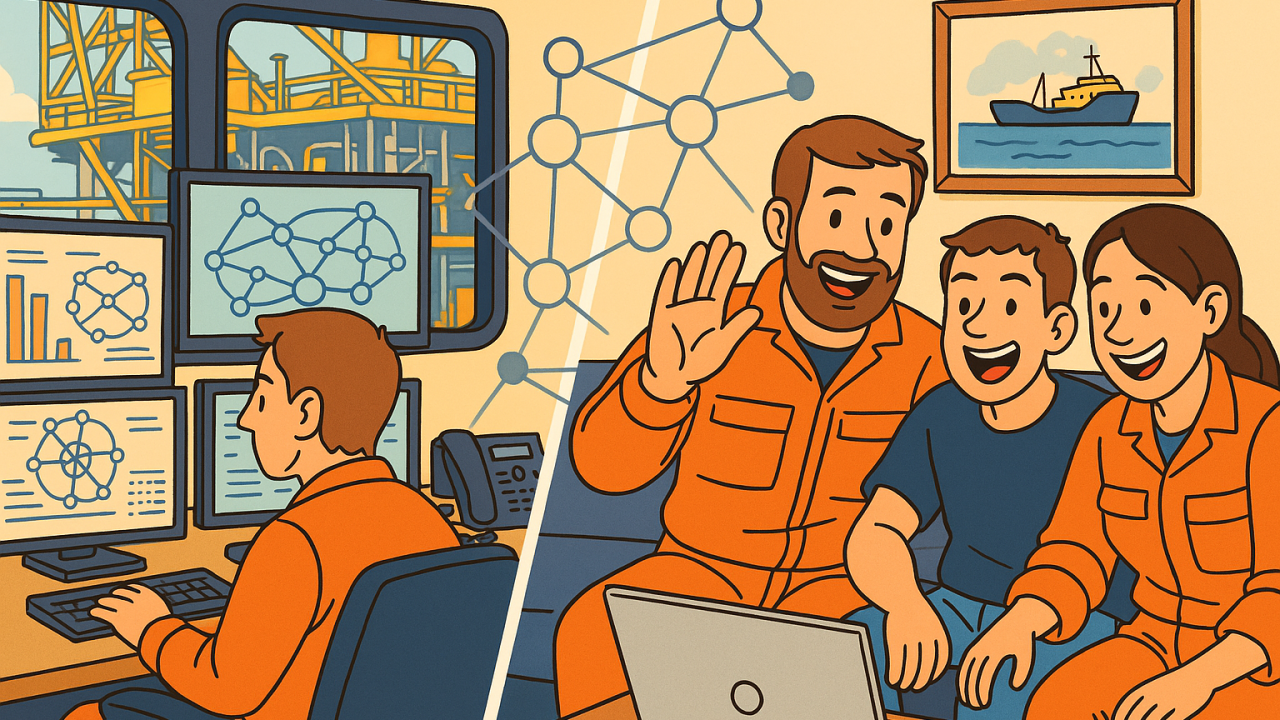Out here, several kilometers from shore, the ocean is endless, the horizon never changes, and the rig becomes your entire world. For weeks at a time, this steel island is home, not just to heavy machinery and oil and gas operations, but to the people who keep it all moving.
And in this world, the network is the invisible lifeline.
The Two Networks That Rule Offshore Life
By day, the business network drives the rig’s heartbeat, operational data streams to shore in real time, OT systems talk to control rooms, safety sensors report every reading, and engineers connect with experts thousands of kilometers away. A single hiccup here could halt operations, delay production, or put safety at risk.
But after hours, when the shift changes and hard hats come off, there’s another kind of connection that matters just as much: the employee welfare network. It’s how someone sends a “goodnight” video to their kids, catches the news or basketball game, or shares a laugh with family and friends back home.
In the isolation of offshore life, this isn’t a luxury, but a lifeline for mental health.
The Challenge: Two Networks, One Infrastructure
These two worlds, critical operations and human connection, often share the same physical network. Without the right design, they can clash:
- A video call could compete with real-time oil or gas data.
- A malware-infected welfare laptop could threaten mission-critical systems.
The answer is balance.
Balancing Connectivity Offshore
Through careful VLAN segmentation, strict access controls, bandwidth prioritization, and redundant satellite links, both networks can thrive without stepping on each other’s toes.
- Business traffic gets guaranteed priority for safety and operations.
- Welfare internet stays reliable enough to make long days and nights more bearable.
Because out here, a LAN isn’t just a tangle of switches, cables, and antennas, but the quiet thread holding together safety, productivity, and morale.
Lessons Learned from Offshore Network Deployments
- Segmentation is non-negotiable – VLANs and firewalls keep welfare traffic isolated from operational systems.
- Bandwidth fairness matters – Prioritize operations, but keep the welfare internet functional to protect crew morale.
- Redundancy saves the day – A secondary link can keep welfare alive when operations take over the main pipe.
- Cyber hygiene applies to everyone – Even welfare devices must meet basic security requirements.
- Build for the future – Welfare expectations and operational data needs will only grow.
A rig’s network is more than just technology, but it’s the backbone of offshore life, carrying both the weight of business and the heart of its people. In the middle of the ocean, connectivity doesn’t just run operations. It keeps people running, too.


Leave a Reply